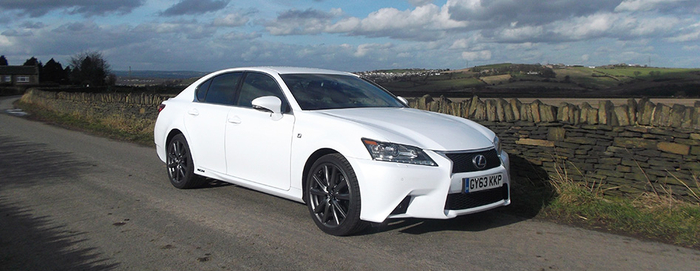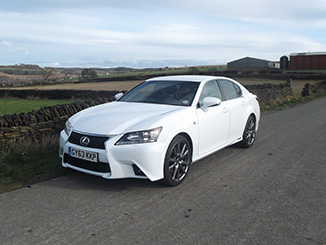Lexus GS 300h F-Sport


We originally drove the GS many moons ago around a test track, on a winter’s day near Budapest, Hungary, with plenty of snow. It didn’t leave you with a warm feeling about their new car. The conditions were far from perfect and probably didn’t show the car off in its best light. So would a winter’s day in Yorkshire make it look any better with no snow and only rain to contend with?
It has to be said that the GS is a really good looking car, very attractive from all angles and so pleasing on the eye compared to previous generations. The “spindle grille” is a masterpiece in design and looks so bold and aggressive from the front. The GS is much more European than Japanese in design. The car we had on test was in white, which made it look very attractive and distinctive.

The interior of the F-Sport is very modern and has loads of nice touches and equipment. It does not have a traditional look and feel to it, which may put some customers off buying one. All the materials used are up to a high standard and fit and finish is excellent. The one disappointment in the cabin is the top of the dashboard, just in front of the huge screen. It looks a bit bland and empty, just not very stylish. It looks like it should be able to hold a clipboard very easily.
The GS 300h is powered a 2494cc petrol engine that produces 181ps. The hybrid motor is 105kW, which boosts the over power to 223ps. It goes from 0-62mph in 9.2 seconds. The electric power comes from batteries that are charged by the car itself and not from an external source, as with PHEVs. When fully charged - and this is done by coasting, braking combined with the petrol engine - it will travel up to 2 miles on electric. This is ideal when in heavy traffic, as it is not using any petrol at all and this is where savings are made. It can be a bit disturbing though for pedestrians, as the car is silent. I discovered this when pulling out of the filling station; the person coming out of the pay-kiosk was looking at his phone and did not hear the Lexus. Fortunately I saw him.
The official combined fuel consumption figure for the GS 300h is 56.5 MPG. During the time we had the car it turned just over 43 MPG, according to the on-board computer, which for a 2.5-litre petrol large saloon is not a bad result. The CO2 emission figure for the F-Sport is an impressive 115g/km, but goes as low as 109g/km on other trim levels with smaller wheels.

The GS is pitched up against competitors such as the Audi A6, BMW 5 Series, Mercedes Benz E Class and Jaguar XF, but Lexus say, and I probably agree too, that the GS does come with more standard specification than its closest rivals.
Out on the roads around home and on the motorway it drives like a dream: so refined, quiet and quick. The CVT automatic gearbox works extremely well. There is no noise or feel as though the transmission is “slipping”. It is more like a conventional gearbox.
Lexus have developed their Hybrid Technology to such an extent that it has almost become the norm, but not quite yet, as many people still prefer a diesel to petrol in this size of car. I can understand their concerns and disbeliefs as to how good a Petrol-Electric Hybrid can be. But technology has moved on over the past few years and any concerns we all once had are quickly disappearing. They are not quirky anymore and have blended in to the mainstream very well now.
The GS feels like a large car, it drives like a large car and it is very comfortable. It is the sort of car you could travel for miles in and get out as fresh as you got in. Prices for the Lexus GS start from £31,495 and go up to £43,690. The F-Sport trim that we had on test costs £41,745.
Martin Ward, Manufacturer Relationship Manager


